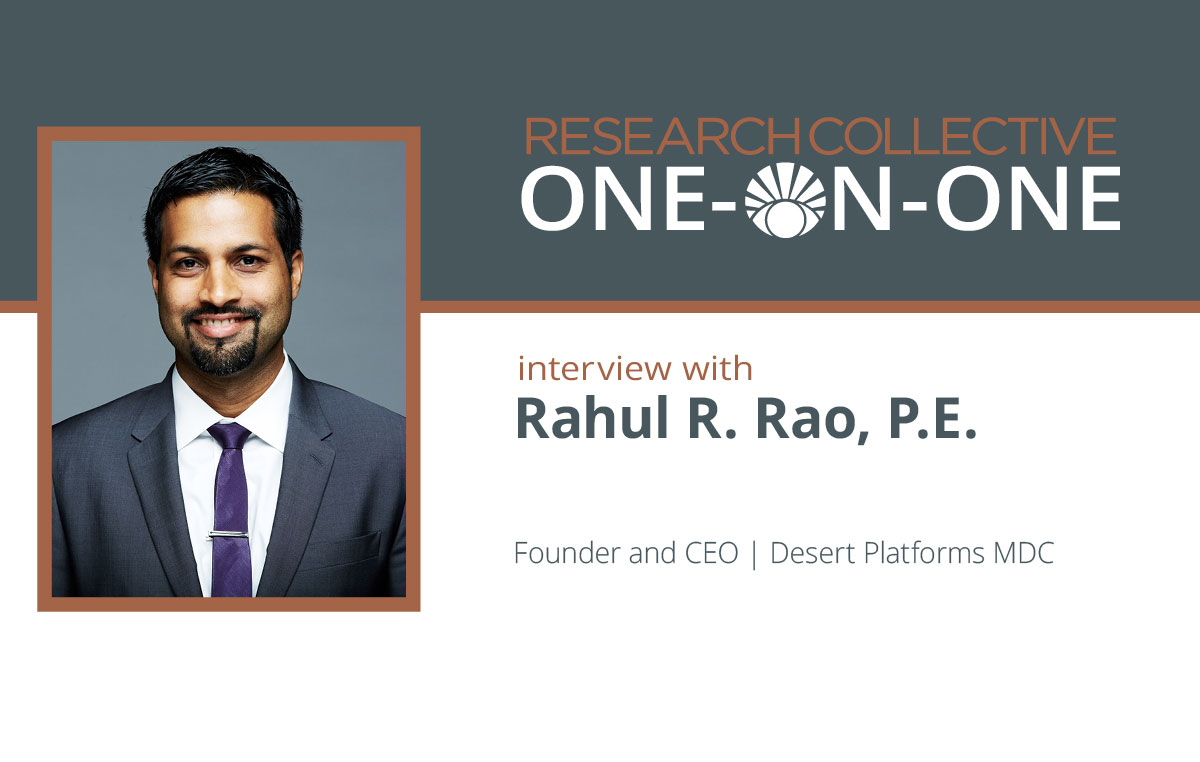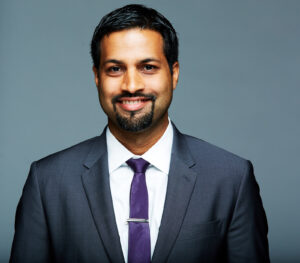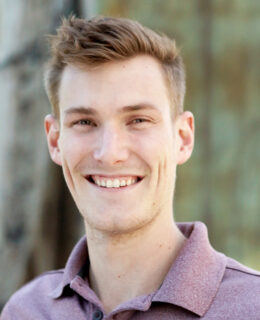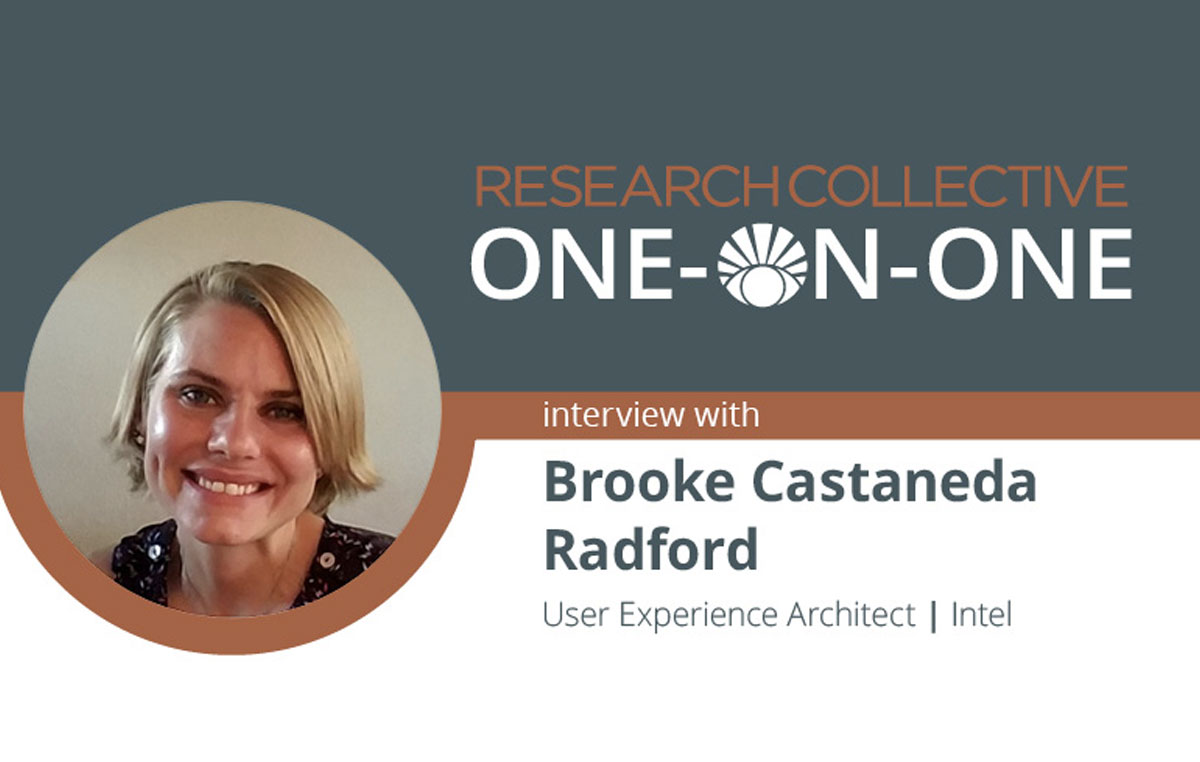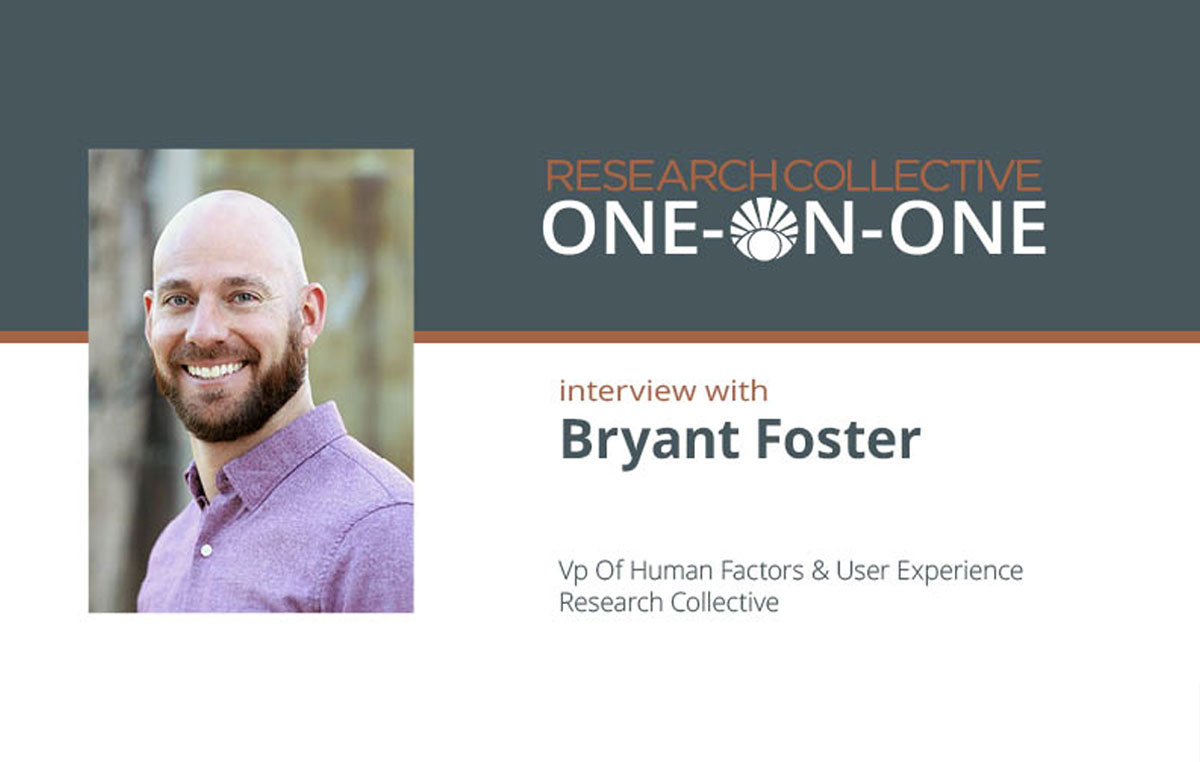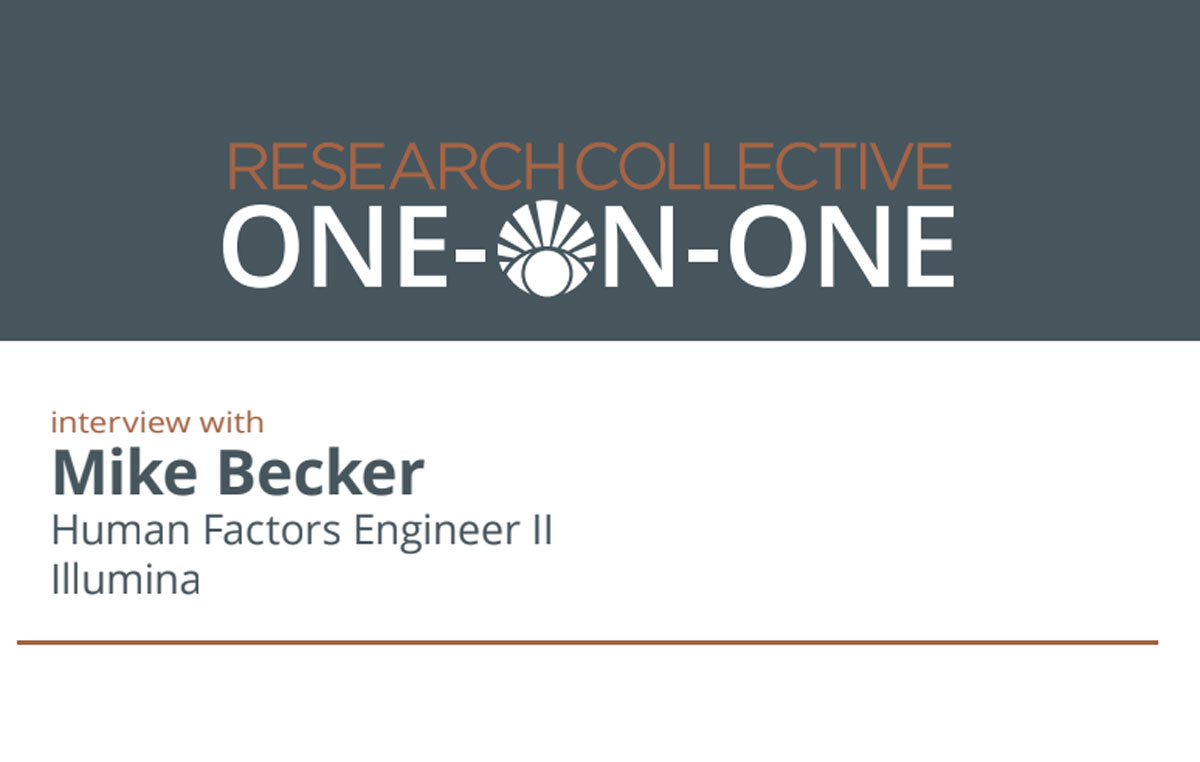Introduction
This month we are pleased to introduce Rahul Rao, Founder and CEO of Desert Platforms Medical Device Consultancy! He and his team work in the med-tech arena, and his interview with us was intriguing, to say the least.
The interview this month mixed things up a bit, expanding its scope to all things medical device. Rahul first discusses mistakes in the medical device design and development processes, then discusses the role human factors has in his line of work. He also shares his opinion on the role of cross-functional groups in medical device development. We hope you enjoy!
Research Collective: First we’d like to get to know you. What is Desert Platforms and what do you do there?
Rahul: Desert Platforms is a medical device consulting firm. Primarily, we help clients get to market faster, decrease development costs, improve regulatory compliance, and ensure a phenomenal product-market fit. By achieving these goals, we increase the client’s ROI and valuation while impacting patients in a positive way.
Our work includes brainstorming product ideas around user needs, selecting materials and components for a product design, developing Design Verification test regimens to ensure product safety and robustness, and assisting with manufacturing set-up of a chosen design. Throughout, we assist clients with Design History File documentation, compliance, and regulatory strategy to ensure all applicable standards and regulatory guidances are taken into consideration.
Research Collective: What are some of the biggest challenges you face as a medical device consultancy?
Rahul: Each product and client is unique. We listen to the client’s objectives and to how the product will be used and placed within the market. The big challenge is to get up to speed quickly on the technology, anatomical considerations, and user perspectives. It can be like drinking from a firehose, but the challenge is our reason for being and finding great solutions to drive patient outcomes and client revenue is our passion.
Research Collective: What are some of the biggest mistakes you see people making in the design and development process?
Rahul: Mistakes happen throughout the entire product development process, however, there are a few areas of concern that come to mind. First, many enterprises do not spend enough time on the front end to thoroughly determine the product user needs.
This is the most critical step of the design control process in my opinion because it is the foundation not only for the design but for the success and revenue-generation ability of the product line as a whole. If the user needs and design input requirements are not properly determined, all the other downstream design steps may be compromised resulting in wasted time (years) and money (millions).
Additionally, clients often do not have a thorough understanding of the design control process and the necessary elements needed to check-off and add to their Design History File for the product. This results in the need to ‘remediate’ the product line and fix gaps due to lack of documentation or lack of testing. Sometimes remediation must occur after product launch which is a scary and stressful proposition due to potential harm to the business assets, reputation of the product, and patient safety.
Research Collective: How does human factors and usability play a role in what you do?
Rahul: Human Factors and usability are huge. These techniques are being incorporated into the formal process of medical device development more and more; both in the United States and abroad. For example, the Center for Devices and Radiological Health, an arm of the FDA, now has a dedicated CDRH Human Factors Team to help designers and medical device professionals navigate these industry terms and concepts. For our work, human factors and usability come into play early in the design process and act as iterative loops to ensure the product will work for the user while simultaneously exploring risk factors for both the patient and user.
These concepts fit into the client strategies that we set for our business such that if the product fails, we want it to fail fast in the lab or thought space, rather than finding out any product deficiencies with a completed design headed for market. We utilize brainstorming, CAD Design renderings (pictures of a design), and 3D printed parts and models to help users get an early look and feel for the product. This early impression allows users to interact with a potential design idea and encourages feedback for design iteration.
Research Collective: What are the biggest mistakes you see people making in their human factors process?
Rahul: The biggest mistake is not using human factors and not considering usability of the device early in the process. Early on, there is flexibility to make changes to the product design, especially before the design is frozen. The other mistake is not realizing that what the user wants is not always what they truly want or need.
A translation must be done from the user’s mouth into tangible design inputs for the engineering team to use as early requirements for ideation. This translation does not always have 100% accuracy and by employing human factors and usability one can quickly learn that the team has interpreted a physician or user need in an incorrect or slant manner. Catching the mis-translation early pays huge dividends both on decreasing development costs and getting to market fast with a great design to delight the user.
Research Collective: What do you think about the medical device industry that others may not agree with?
Rahul: I believe a well-functioning medical device organization is democratic, all cross-functions have a say and are equally valuable to the design and development of new products. The organization understands that at some point, Regulatory and Quality need to take the lead, while Marketing and Engineering follow, and other times the opposite is true.
This duality might exist in a contrasting way for one product line versus another within an organization. This type of flexibility reminds me of a high-performance engine where some pistons are at the bottom of their stroke and others at the top of their stroke, only to find themselves in the opposite positions in an instant to better serve the business.
I also believe that Regulatory is instrumental to the innovation process. This is a heretical concept because the stereotype of Regulatory is to simply say ‘no’ to ideas that are outside current operating parameters. However, pulling in Regulatory partners at the right time can fast-track a project to success. For example, getting international standards and regulatory guidances at the beginning of a project can actually help innovators set requirements for the product’s design.
Getting buy-in, or approval from others prior to beginning, is important in a healthy organization as well. Many may disagree with that stance and instead use railroading tactics, but the time that is lost in the beginning reaching for consensus is more than made up for by the team synergy that results.
Research Collective: What have been some of your favorite projects?
Rahul: One of our favorite projects was the development of a novel feminine-hygiene product. Many times products for one group are designed by those without sufficient knowledge of the group (e.g. products for women designed solely by men). In this case we were able to put together a diverse design team comprised of women and men. The diversity of thought of the group and varied understanding of this ‘taboo’ subject oddly encouraged frank dialogue on the user needs. This exchange of ideas manifested itself in a truly unique and innovative design solution.
I also enjoy cardiovascular projects because of the challenges involved with biocompatibility, blood behaving in a non-Newtonian fashion, and access to interior anatomical features. Electromechanical projects are also fun because of the complexity and need to delve into international standards such as ISO 60601-1.
Rahul R. Rao | Founder and CEO | Desert Platforms MDC
Mr. Rao is a med-tech professional with over 13 years of experience at both multi-national corporations and start-ups. He is adept at helping med-tech organizations get their products to market faster in a more cost-effective manner, and with appropriate regulatory compliance, thereby increasing each organization’s overall worth and contribution to society.
His varied experiences within the med-tech industry as a R&D Engineer, Quality Engineer, Manufacturing Engineer, New Product Development (NPD) Project Manager, Program Manager, and Upstream Marketing Product Manager have provided him with a full over-view of the roles and skills needed for success in fast-paced biotech environments. He has brought value to large firms such as Southwest Research Institute, W.L. Gore and Associates, and Merz Aesthetics. Additionally, Mr. Rao has experienced first-hand the trials, tribulations, and triumphs of startups such as Verve Medical, Inc. and Ulthera, Inc (acquired for $600M).
As CEO of Desert Platforms Medical Device Consultancy, Mr. Rao continues the mission to empower early-stage ventures towards their goal of improving patient outcomes and changing the world. He enjoys collaborating with med-tech organizations such as AZ BIO and the Flinn Foundation, and mentoring ventures and colleagues at the Center for Entrepreneurial Innovation in Phoenix, AZ.
